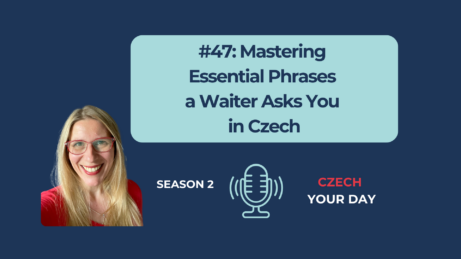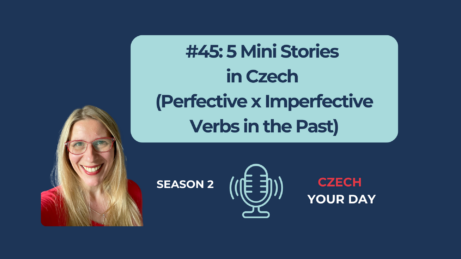Czech Out Your Preferences: From Travelling to Chocolate (MÁM RÁD CESTOVÁNÍ, MÁ RÁDA ČOKOLÁDU) (S02/E12 – daily podcast CZECH YOUR DAY)

THIS WEEK’S TOPIC: KONÍČKY/HOBBIES
THE TRANSCRIPT/HANDOUT IS DOWN BELOW
Understanding „Mít Rád(a)“
In today’s episode, we’re exploring the phrase „mít rád(a),“ which translates to „to like.“ There are multiple ways to express preferences in Czech, but for one’s sanity, we’re focusing on this one first.
This expression changes depending on the gender of the speaker. Check it out.
Examples:
- Female:
- „Mám ráda cestování.“ (I like traveling.)
- „Mám ráda pečení.“ (I like baking.)
- „Mám ráda knížky.“ (I like books.)
- „Mám ráda dobré jídlo.“ (I like good food.)
- „Mám ráda čokoládu.“ (I like chocolate.)
- Male:
- „Mám rád cestování.“ (I like traveling.)
- „Mám rád knížky.“ (I like books.)
- „Mám rád dobré jídlo.“ (I like good food.)
- „Mám rád čokoládu.“ (I like chocolate.)
Notice the subtle yet crucial difference: females use „ráda,“ whereas males use „rád.“
Gender Matters
Understanding gender differences in expressions is essential. For instance, when discussing my preferences, you say, „Renča má ráda,“ translating to „Renča likes.“
For Tadeáš, it would be, „Tadeáš má rád,“ or „Tadeáš likes.“
It’s All About Nouns and Activities
Another key point: following „mít rád(a),“ you should use an activity or a noun. Verbs such as „bake“ or „travel“ are not used in their verb form. Instead, you use the noun form, like „baking“ or „travelling.“
You will see in the upcoming episodes that other structures expressing preferences have it the other way round so it’s important to digest this one first.
Expressing Dislikes:
To express dislikes, simply add „ne“ at the start:
- „NEMÁM RÁDA“ for females and „NEMÁM RÁD“ for males.
Practice with Preferences
Now, let’s create a few scenarios where you can express preferences for Renča or Tadeáš.
Example Sentences:
- What does Renča like?
- „Renča má ráda cestování.“ (Renča likes traveling.)
- „Renča má ráda pečení.“ (Renča likes baking.)
- „Renča má ráda knížky.“ (Renča likes books.)
- „Renča má ráda čokoládu.“ (Renča likes chocolate.)
- „Renča má ráda dobré jídlo.“ (Renča likes good food.)
- What does Tadeáš like?
- „Tadeáš má rád cestování.“ (Tadeáš likes traveling.)
- „Tadeáš nemá rád pečení.“ (Tadeáš does not like baking.)
- „Tadeáš má rád knížky.“ (Tadeáš likes books.)
- „Tadeáš má rád čokoládu.“ (Tadeáš likes chocolate.)
- „Tadeáš má také rád dobré jídlo jako Renča.“ (Tadeáš also likes good food like Renča.)
- What do you like?
- „Co máš rád ty?“ for males and „Co máš ráda ty?“ for females.
- What don’t you like?
- „Co nemáš rád?“ for males and „Co nemáš ráda?“ for females.









